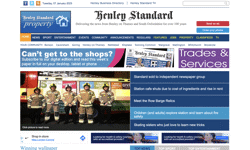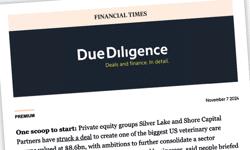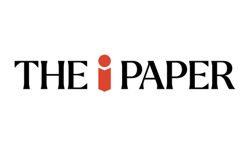The new research examines advertising engagement: the relationship between consumer engagement with website content and particularly their reaction to advertising on different website types: original content sites, portals and social networks.
The findings in the study, conducted by GfK NOP, show that engagement and advertising responsiveness is strongest on original content sites compared to other site genres. Respondents are almost twice as likely to trust advertising and brands on content sites vs social media sites, while they are almost three times more likely to believe that content sites are better than social media sites at influencing positive brand opinion. By examining the complex relationship between site and audience, the study also reveals that measures such as dwell time and frequency of visit are not as indicative of engagement as previously thought.
Lee Baker (pictured), Director of AOP comments, “This is the first research to highlight the inadequacies of metrics to measure engagement that the industry currently employs. This study offers publishers, advertisers and agencies compelling data; and ultimately offers advertisers business-critical solutions around advertising engagement. The results of this new study represent a marked evolution in how to view advertising engagement online.”
“The New Rules of Engagement” study is endorsed by AOP members. A select group of publishers have been briefed to present the findings, over the next few weeks, to the advertising community and key stakeholders including advertisers, creative and media agencies and other industry bodies through an active programme of presentations, debates, forums and through the AOP’s Committee activity.
The study identifies five key dimensions of engagement for users, of a site being trustworthy (recognition of and confidence in a brand); authoritative (consistent, reliable thought-leadership); unique (original content); offering community (featuring like-minded user forums); and entertaining.
The study also suggests there are three key characteristics of advertising behaviour: trust (consumers who particularly trusted the site brands they used, were more likely to trust the brands advertising on these sites - and more likely to respond to advertising on these sites); action (consumers were more likely to click on advertising links and/or purchase from sites they trust) and awareness.
The AOP’s Research Committee commissioned GfK NOP to conduct the project to examine engagement levels across segments of the online landscape content sites (eg: UK Newspaper sites, UK commercial TV and radio sites, UK magazine sites and trade/business publication sites) portals (eg: MSN, Yahoo!) and social network sites (eg: Facebook, MySpace). A survey of 1,340 interviews via an online panel took place from 13-20 October 2010 with UK respondents only.
Tim Cain, Head of Research and Insight at the AOP says, “This is a significant piece of research in that it has sought to understand better the underlying factors that can really ascribe “engagement” and create a framework for determining how and where it exists. This study has created a model that can be replicated for comparative analysis at individual site, category or genre level.”
Sarah Messer, Chair of the AOP’s Research Committee and Head of Commercial Research & Insight at ITV adds, “Online is known as the ‘accountable’ medium, and while direct response is a persuasive metric, this research shows that some indicators, such as ‘dwell time’, are not an accurate measure of ‘engagement time’. Users will visit social network sites daily and for long periods of time, yet by visiting a B2B, consumer or business site and obtaining relevant information or news quickly, doesn’t make the user any less ‘engaged’. In fact, we’ve found users are more likely to respond to advertising on content sites than social networks. The comprehensive methods used for this study, we feel, not only give the industry much more potent data, but also greater insight, into consumer behaviour in relationship to online advertising engagement.”
Lee Baker, Director of AOP concludes, “The research was commissioned to help us inform our publisher members, but the findings apply across the board to advertisers and agencies. We are in a unique position to define advertising engagement online, and we feel this study gives a deeper understanding and more accurate analysis to the metrics used to date. The AOP aims to add depth to the challenges of determining engagement.”
About the research
• The AOP “The New Rules of Engagement” study is a one-off study published on 1 December 2010.
• GfK NOP was commissioned to undertake the survey on behalf of the AOP.
• Methodology: 1,340 interviews were conducted via an online panel from 13-20 October 2010, with UK respondents only.
• Respondents were regular users of the internet (at least once a week) and had to have visited a relevant site at least twice per month. Respondents then answered questions based on a specific site they regularly visited within one of the above site types.
• Results were segmented by three site types: Quality Content sites (eg: UK Newspaper sites, UK commercial TV and radio sites, UK magazine sites and trade/business publication sites); Portals (eg: MSN, Yahoo!) and Social Network sites (eg: Facebook, MySpace). Key findings: 5 dimensions of site engagement: Trustworthy; Community; Authoritative; Unique; Entertaining. 3 characteristics of advertising behaviour: Trust, Action, Awareness.
• Respondents who agreed that they trusted advertising on these sites (based on those who trust the website): Content sites (59%); Portals (48%); Social Network sites (34%).
• Respondents who agreed that they trusted brands on these sites (based on those who trust the website): Content sites (60%); Portals (43%); Social Network sites (39%).
• Content sites are better at influencing positive brand opinion – respondents who agreed that they feel more positive towards a brand on a site: Content sites (32%); Portals (17%); Social Network sites (14%).
• AOP members represent the broad range of newspaper and magazine publishing, TV and radio broadcasting and pure online media in the UK: producers of original, branded, premium and quality content.
About AOP
The AOP says: “The UK Association of Online Publishers (AOP) is the industry body representing online publishing companies that create original, branded, quality content. AOP champions the interests of companies from newspaper and magazine publishing, TV and radio broadcasting, and pure online media. The AOP raises awareness, and addresses concerns relating to all areas of online publishing to industry and Government; covering topics such as paid-for-content, online subscription models, data protection, copyright, content management, new technologies and audience measurement. AOP publishes original research including the annual Census now in its seventh year. It also hosts forums, conferences and events, where members can debate issues, meet peers and network.
The AOP hosts two annual flagship industry events, the AOP Digital Publishing Awards, which was held in June 2010, and the AOP Digital Publishing Summit which was held in October 2010.
AOP Members include AN Media, Bauer Consumer Media, BBC, BBC Worldwide, BSkyB, CBS Interactive, Centaur, Channel 4 New Media, Condé Nast Digital, Economist Group, Financial Times, Future Publishing, Global Radio, Guardian Media Group, Haymarket Media Group, Incisive Media, Independent Print Limited, IPC Media, ITV, The National Magazine Company, News International Ltd, PPA, Reed Business Information, Telegraph Media Group Ltd, Thomson Reuters, Trader Media, Trinity Mirror, TSL Education.
The AOP’s Research Committee is instrumental in defining research projects and creating networking opportunities for digital publishers to tackle common issues, share knowledge and create a forum for research debate, ultimately to create an opportunity to shape the content and outputs of AOP insight activity. Sarah Messer, Head of Commercial Research & Insight at ITV was appointed as the Chair of the AOP Research Committee in January 2010.”










